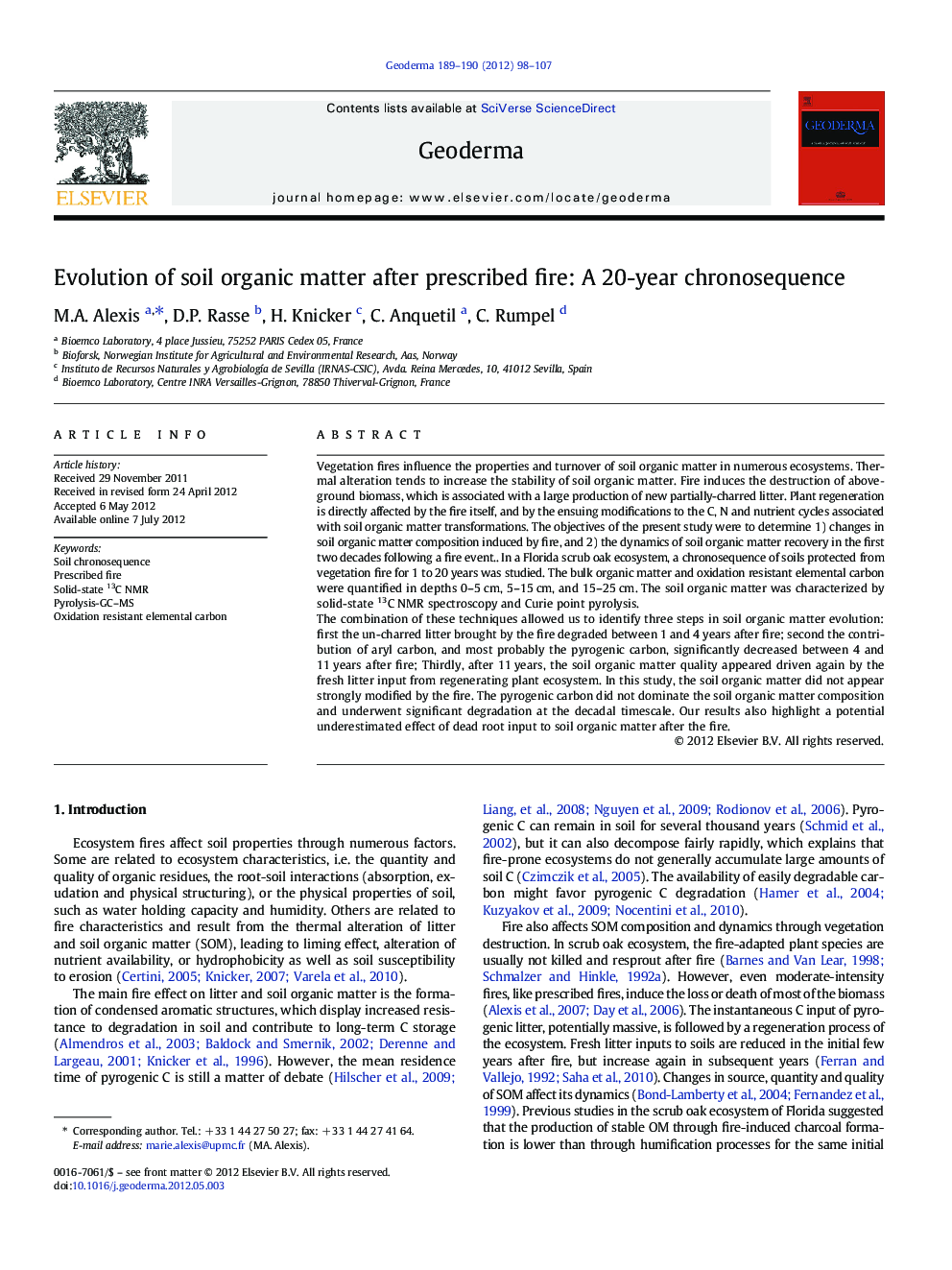| کد مقاله | کد نشریه | سال انتشار | مقاله انگلیسی | نسخه تمام متن |
|---|---|---|---|---|
| 4573577 | 1629493 | 2012 | 10 صفحه PDF | دانلود رایگان |

Vegetation fires influence the properties and turnover of soil organic matter in numerous ecosystems. Thermal alteration tends to increase the stability of soil organic matter. Fire induces the destruction of above‐ground biomass, which is associated with a large production of new partially-charred litter. Plant regeneration is directly affected by the fire itself, and by the ensuing modifications to the C, N and nutrient cycles associated with soil organic matter transformations. The objectives of the present study were to determine 1) changes in soil organic matter composition induced by fire, and 2) the dynamics of soil organic matter recovery in the first two decades following a fire event.. In a Florida scrub oak ecosystem, a chronosequence of soils protected from vegetation fire for 1 to 20 years was studied. The bulk organic matter and oxidation resistant elemental carbon were quantified in depths 0–5 cm, 5–15 cm, and 15–25 cm. The soil organic matter was characterized by solid-state 13C NMR spectroscopy and Curie point pyrolysis.The combination of these techniques allowed us to identify three steps in soil organic matter evolution: first the un-charred litter brought by the fire degraded between 1 and 4 years after fire; second the contribution of aryl carbon, and most probably the pyrogenic carbon, significantly decreased between 4 and 11 years after fire; Thirdly, after 11 years, the soil organic matter quality appeared driven again by the fresh litter input from regenerating plant ecosystem. In this study, the soil organic matter did not appear strongly modified by the fire. The pyrogenic carbon did not dominate the soil organic matter composition and underwent significant degradation at the decadal timescale. Our results also highlight a potential underestimated effect of dead root input to soil organic matter after the fire.
► A chronosequence of soil was collected 1 to 20 years after a fire event.
► The soil organic matter quality was not strongly affected by prescribed fire.
► The input of dead roots might represent an underestimated soil C source after fire.
► 11 years after fire the fresh litter input drove the organic matter composition again.
Journal: Geoderma - Volumes 189–190, November 2012, Pages 98–107